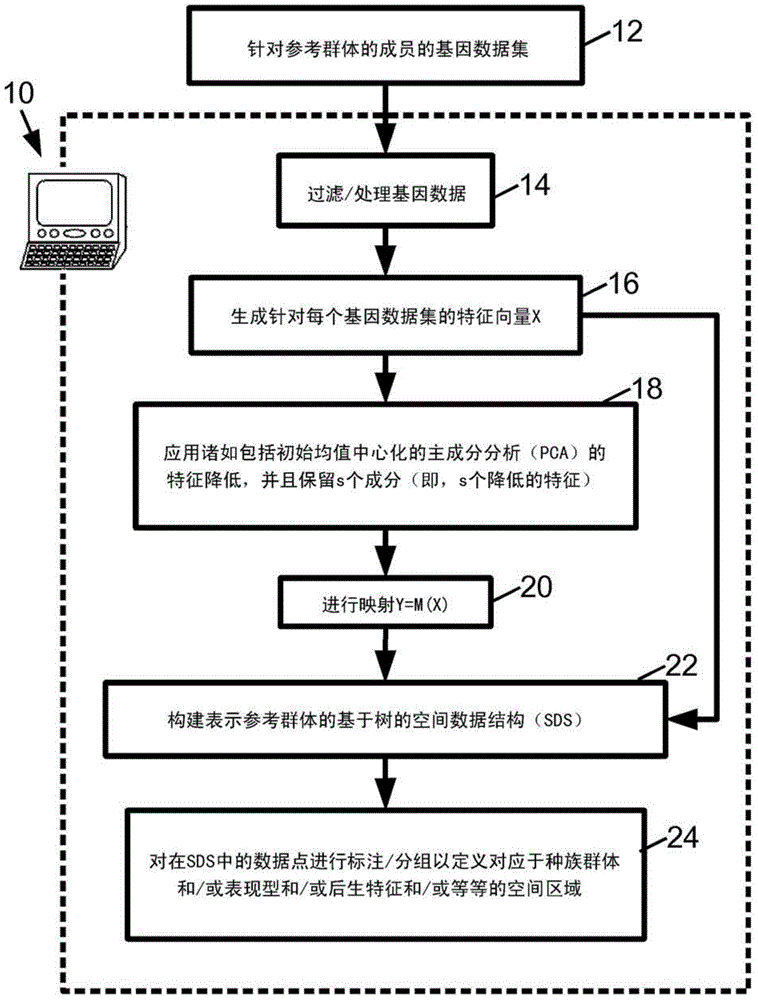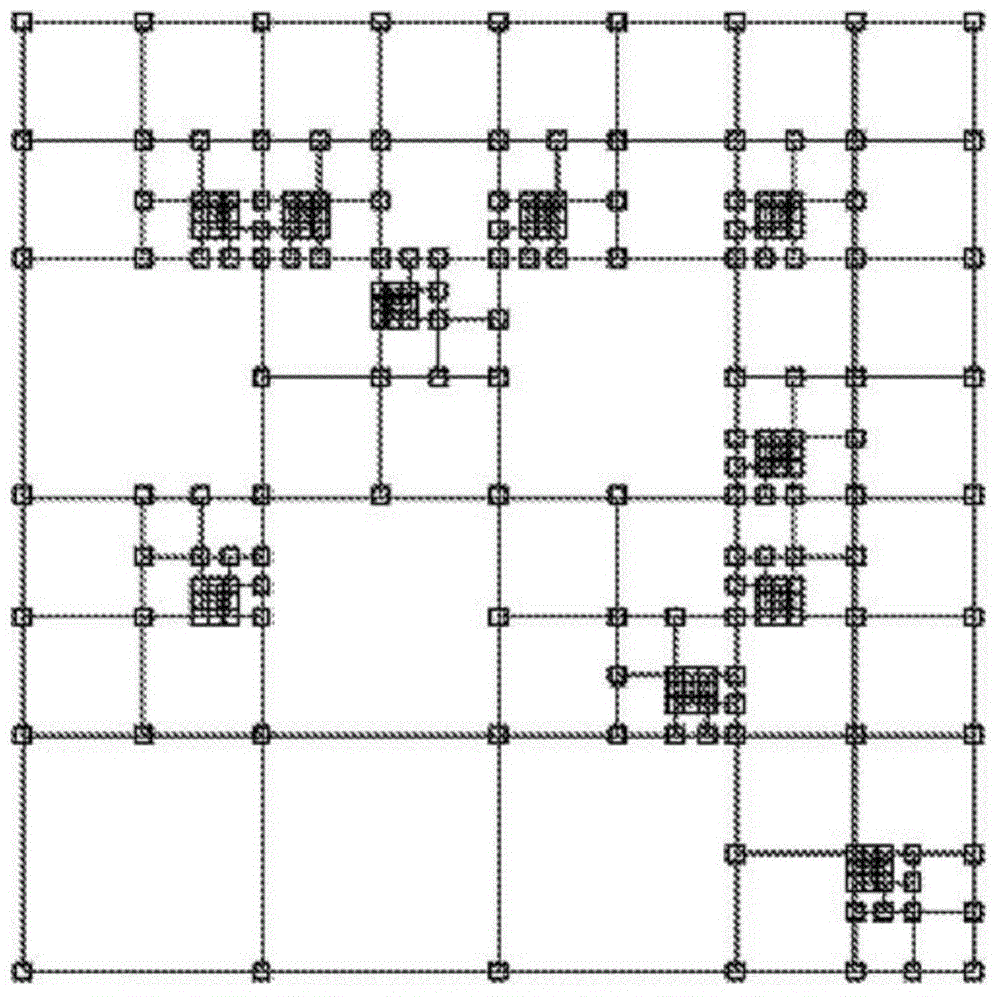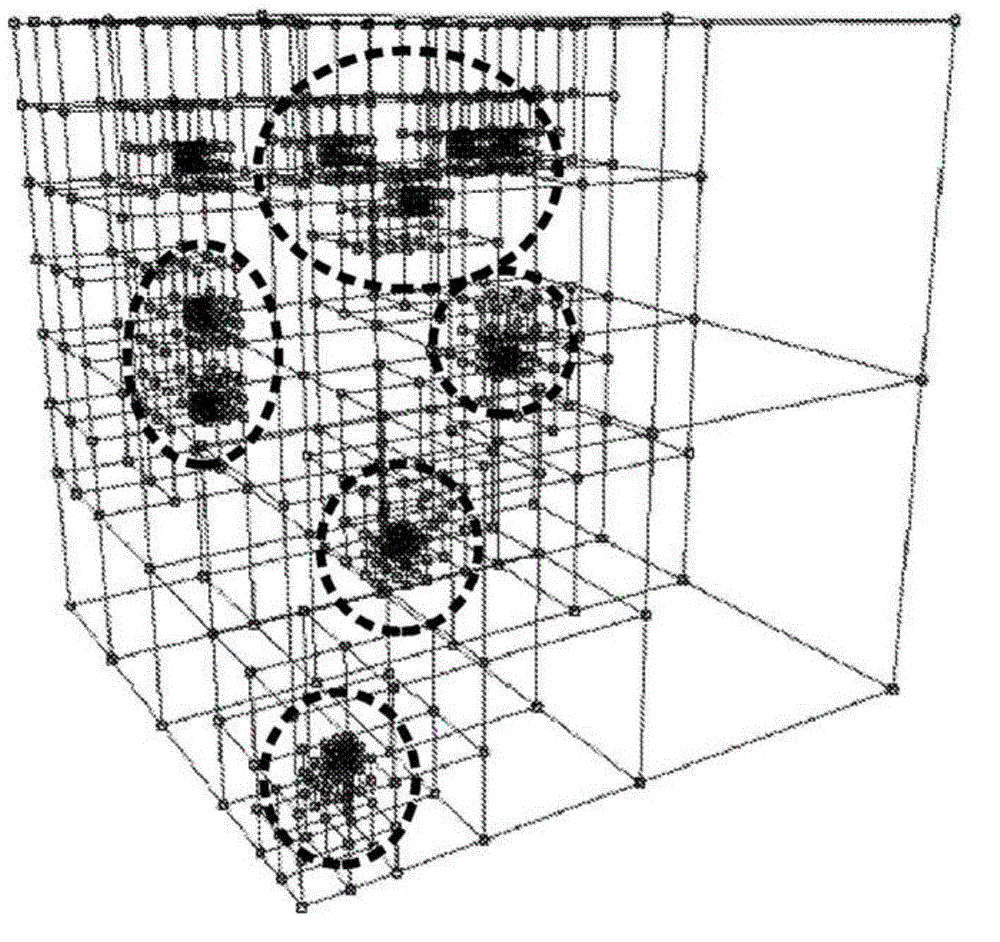Population classification of genetic data set using tree based spatial data structure
A genetic data and spatial data technology, applied in the field of genetic analysis and medical application, can solve the problem of not using complete genetic data sets, and achieve the effect of reducing computational complexity
- Summary
- Abstract
- Description
- Claims
- Application Information
AI Technical Summary
Problems solved by technology
Method used
Image
Examples
Embodiment Construction
[0024] refer to figure 1 , diagrammatically shows a system for generating a population classifier for classifying a genetic dataset. The system is suitably implemented by a computer or other electronic data processing apparatus 10 programmed to perform the disclosed processing operations and receives as input a plurality of genetic data sets 12 for members of a reference population. Genetic data sets can include, for example, genetic sequencing data (nuclear DNA data, mitochondrial DNA data, RNA data, methylation data, etc.), protein expression data generated using microarrays or other laboratory processing. In some embodiments, the genetic data set 12 includes a whole genome sequence WGS data set or other large amount of genetic sequences generated by a next generation sequencing device. Genetic data set 12 optionally may include more than one type of genetic data, for example, both sequencing data and microarray data. Genetic datasets 12 are substantially overlapping (ie, ...
PUM
 Login to View More
Login to View More Abstract
Description
Claims
Application Information
 Login to View More
Login to View More - R&D
- Intellectual Property
- Life Sciences
- Materials
- Tech Scout
- Unparalleled Data Quality
- Higher Quality Content
- 60% Fewer Hallucinations
Browse by: Latest US Patents, China's latest patents, Technical Efficacy Thesaurus, Application Domain, Technology Topic, Popular Technical Reports.
© 2025 PatSnap. All rights reserved.Legal|Privacy policy|Modern Slavery Act Transparency Statement|Sitemap|About US| Contact US: help@patsnap.com



